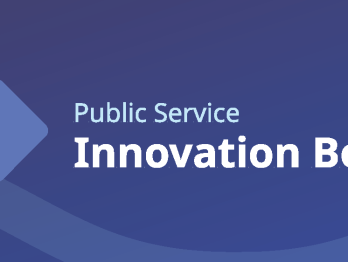Do’s and Don’ts of Public Sector Innovation Networks

Authors: Christina Vogt and Martin Ruebens (INO – Flemish Public Sector Innovation Network), Patricia Idsinga and Frits Bussemaker (RIC – Dutch Government Innovation Community), Laurien Mues (NIDO – Belgian federal government innovation lab), Tom Van Nieuwenhove (City of Ghent)
In the course of the 2021 Creative Bureacracy Festival, five community builders from four north-west European public sector innovation networks (PSIN) came together to discuss their experiences, hopes as well as the challenges they have encountered in the establishment and management of their public sector innovation networks.
This article outlines the main take-aways, hoping that they resonate and inspire other public network conveners and community builders. We are also eager to learn about your experiences and encourage you to enhance the conversation by getting in touch via our contact details below.
1. Start a public sector innovation network? – Do!
There are many different ways for a PSIN to be born. We found three among us:
The naturals: starting bottom-up and from scratch
The feeling of ‘hey, we’re quite innovative already, but we are all working in our own silo’s – let’s create a space where the different disciplines can meet each other’ lies at the heart of many PSIN’s. By accidentally meeting others, civil servants often realise that they want to join forces by sharing their knowledge on all levels of innovation, both technical and societal. Even more valuable is sharing mistakes: sharing moments of failure, which are an inherently part of innovation.
The adopters: boosting existing initiatives
Adopting, tweaking and boosting (small) existing initiatives is another way to start a public sector innovation network. Networks surviving on little, often voluntary, forces can be re-energised by a more professional, facilitating approach.
The mandated: top-down
A top-down mandate to starting a public sector innovation network is pure luxury. However, it is not enough to bring the network to life, especially since these networks need to constantly reinvent themselves. Seeking out and keeping abreast of the needs of your community is essential.
2. Smash the silos? – Do!
A top-down approach to reducing silos often proves unsuccessful. A more effective approach might be to support civil servants who want to push and expand the boundaries. PSIN’s can help explore the space outside the box and explore and fully make use of the space inside the box.
There are additional pitfalls to the bottom up approach to stimulating innovation: you may find yourself becoming a possible threat to other departmental innovation centers or senior management. Therefore, it’s better to stay focused on connecting the dots; on being the catalyst. Make clear that you don’t want to take the role of ‘innovation coordinator’ – as there is nothing to win by putting yourself above other initiatives.
3. Seek out the political spotlight? Do (but delicately)
Both the spotlight and the shadow are necessary for PSIN’s to prosper: they need the dynamics of the grassroots and the mandate. Most of us don’t actively involve our political stakeholders in the network but keep them informed about our activities. As long as you focus on the ‘how’ more than on the ‘what’, you usually get enough freedom as a PSIN.
4. Connecting innovators? – Do! (duh ?)
Setting up a PSIN is an innovation in itself: it’s about claiming the space and taking the time to bring people together. Connecting people is the most important instrument to boost innovation. But, how do you do that?
Focus on what you have in common
Focus on similarities, rather than differences. Encourage people to ‘dare to share’ and ‘dare to ask’. This opens up meetings and allows the group connections and energy to grow.
Connect on a personal level
Treat people as individuals, not functions. Make space to connect with them personally, not only on the topic of innovation.
Gather around a shared goal
Go beyond the network and build a community with a shared mission, goal or vision. This goal will have to be achievable and practical. For instance ‘innovating the public sector’ too high-level to fuel a community.
Share (a feeling of) responsibility
You want to create a space in which you can rely on network members to support the organization of the network.
Drink loads of coffee (although tea is acceptable too)
Knowledge sharing has different facets: setting up meetings, events, online speed-dates or just chatting over a cup of coffee.
Often members of senior management are also innovators, but if handled incorrectly their presence might hamper the trust and creativity of the community. As a community manager, it’s important to ensure that members are judged on the contributions they make, not their hierarchal position.
5. Starting a PSIN with only two or three people? – Do!
All of our teams are small: comprised of two to four people. At the start, people have a wait-and-see attitude towards new initiatives. But once you start asking questions like ‘what do we have in common?’, ‘how do we want to collaborate?’, ‘what do we have to offer?’, ‘what do we expect?’, you force people to realise what their respective needs are.
Search for the question that is unique to your community. The answer to this question is the added value to your community; the common goal that gets people intrinsically motivated. And voila! With just two or three people, a community is created.
6. Define your success by the number of participants? – Don’t!
The number of event participants or experiments realised don’t say that much about the value added. The main objective of a PSIN should be the continuous learning of its members; the development of their learning lens and strengthening of their skills as policy entrepreneurs. If they stop learning, we are not a good network.
7. Keep it all to yourself? – Don’t!
Community builders are pathological connectors. This means not just connecting ourselves to people in other networks, but assisting other people to become connected. In essence, it’s about becoming a matchmaker that helps bridge the gap.
So do we have to share everything with everybody? No, that would be naïve. But your mindset should be open. A closed community should be the exception: don’t create your own silo if you want an open, interconnected public administration.
8. Make diversity a key premise – Do!
When you work in innovation, you also have to work on diversity. ‘Cast’ people who bring different perspectives. As an open government, we have to use all the knowledge and means of different partners, both within our administration, but also ‘out there’ – in the quadruple helix.
However, diversity in the public workforce is still a blind spot: most departments don’t easily attract people from a foreign origin or with disabilities. But don’t despair, there is a lot you can do! For instance, go out and familiarise yourself with services and organisations that can help you get in touch with minorities. Alternatively, when organising events, push speakers to bring in ‘diverse’ colleagues in order to avoid homogenous panels. At the same time, you have to realise that you are dealing with a structural problem which one PSIN alone won’t be able to fix. Therefore, do what you can within your own circle of influence.
9. Kill your darling(s) – Do!
When is the right moment to shut down a network? Terminating is tough, and yet all PSIN’s have to deal with it one day or another. The day that you’re no longer relevant or you feel as though you are wasting people’s time, please stop.
Contact details of the authors:
Tom Van Nieuwenhove – City of Ghent ([email protected])
Laurien Mues – Belgian federal government innovation lab (NIDO) ([email protected])
Martin Ruebens – Flemish Public Sector Innovation Network (INO) ([email protected])
Patricia Idsinga and Frits Bussemaker – Dutch Government Innovation Community (RIC) ([email protected] and [email protected])












